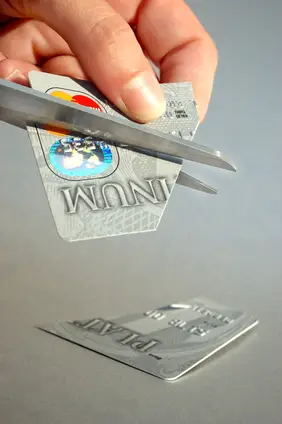 Sixty percent of college graduates are in debt to the tune of $26,500, according to a report by College Board. It’s easy to get overwhelmed by monthly student loan payments and high interest rates, especially when entering a still-recovering job market earning entry-level wages. If you’re struggling each month and still not making it, it’s time to rethink what you spend each month and dig out of debt.
Sixty percent of college graduates are in debt to the tune of $26,500, according to a report by College Board. It’s easy to get overwhelmed by monthly student loan payments and high interest rates, especially when entering a still-recovering job market earning entry-level wages. If you’re struggling each month and still not making it, it’s time to rethink what you spend each month and dig out of debt.
Start by writing down what you earn each month, and then list your luxuries, necessities and fixed costs. Now figure out how you can offset your expenses with what you can give up. Here are a few ideas to get started:
Driving
Did you put driving on your necessity list? Driving to work and the store may be a necessity if they’re miles away, but anything else is a luxury. Use your car sparingly to save on gas, ongoing maintenance and repairs. Instead, take the bus, ride your bike or walk.
Or, get rid of your car altogether. You’ll save your monthly car and insurance payments plus gas, maintenance and repair costs. Take the bus instead, and consider renting a car for just a few hours through Zipcar when necessary.
But can curbing your car really save that much? According to the Bureau of Labor Statics, the mean transportation cost in the U.S. per two-person household is $9,211 every year. Put those thousands toward your debt and find an apartment near your job instead of driving to work.
Internet and Cable
It’s easy to forget that Internet and cable are actually luxuries. If you have a smartphone with a data plan, use it to check email and watch videos on the small screen instead of paying upwards of $100 to $200 each month for Internet and cable. Libraries, coffee shops and public hot spots also offer Wi-Fi for free throughout most cities.
Join forces with other recent grads in your building. Ask if your floor wants to share an open Wi-Fi signal and split the bill evenly. Write up a contract and decide whose name the bill will be in, when it needs to be paid and how any connectivity issues will be resolved in advance.
Your Time
Earning extra money is probably the fastest way to pay down bills. Advertise your services for landscaping, carpentry, virtual assistance and proofreading, typing or junk removal to earn more toward paying down your debt. Charge $15 an hour. Just trading 10 hours of time each week could result in an extra $600 or more each month.
Brainstorm with your friends on how you can help each other save. Offer to help someone with their resume in exchange for taking you to work for a week. You could also join a food co-op in your area. Typically a volunteer is required to work for a few hours a month in exchange for roughly 20 to 40 percent off produce and other groceries.
Visit a loan officer at your college to find out about student loan forgiveness.
Self-Care (Things Like Massages and Expensive Haircuts)
You can skimp on self-care luxuries without giving them up completely. Massage, acupuncture and chiropractic schools offer free or low-cost services so their students get practice. Schools that train future hair stylists also offer low-cost or free haircuts. A haircut at an academy could cost as little as $10 instead of $50 for a seasoned cutter. That could average $480 a year in savings if you get your hair cut once a month.

